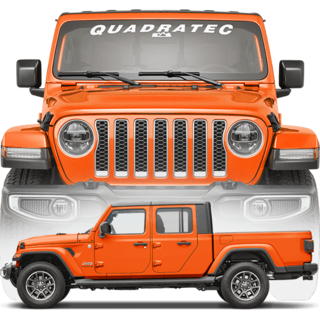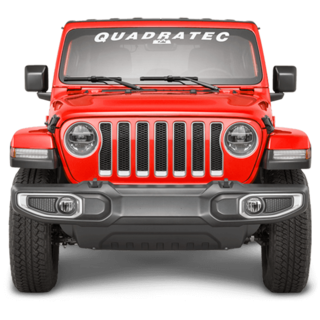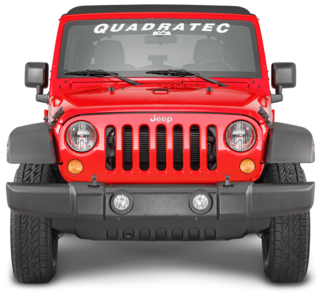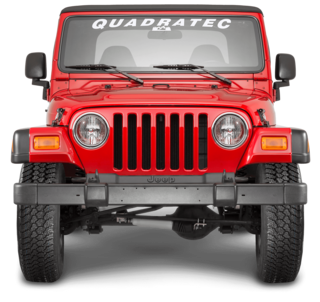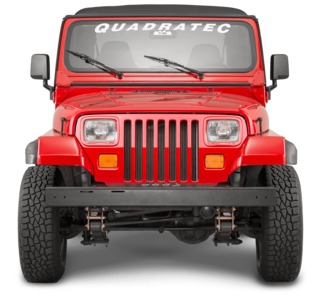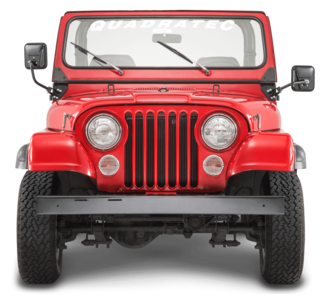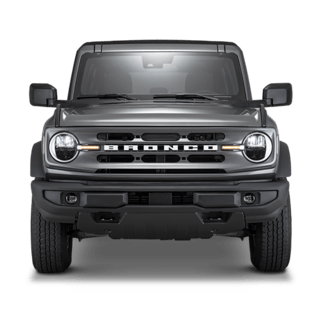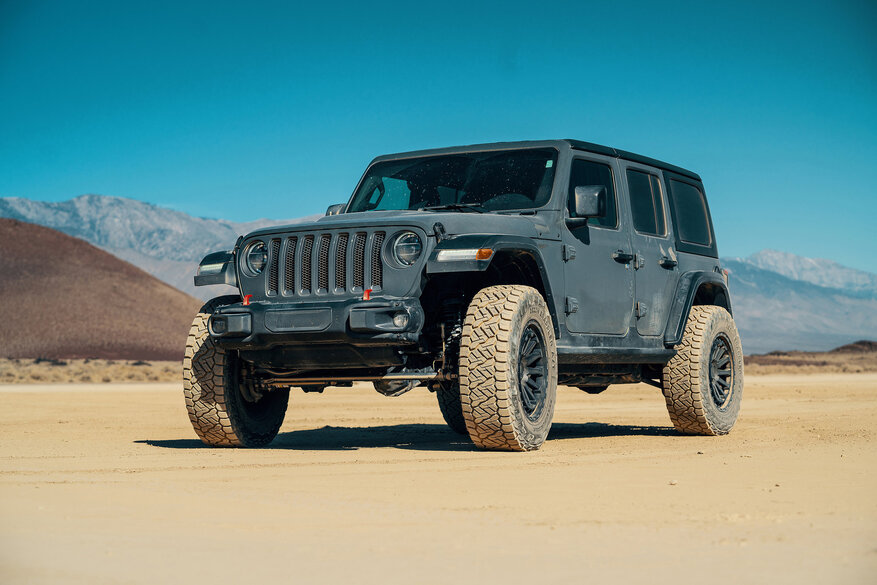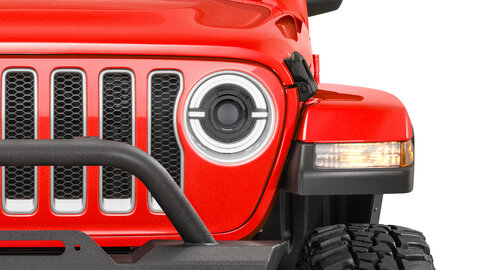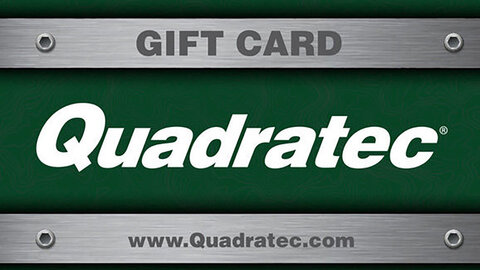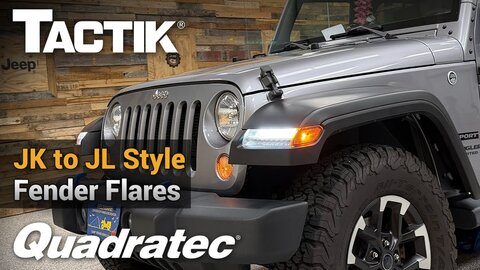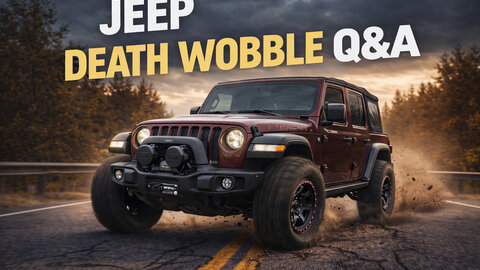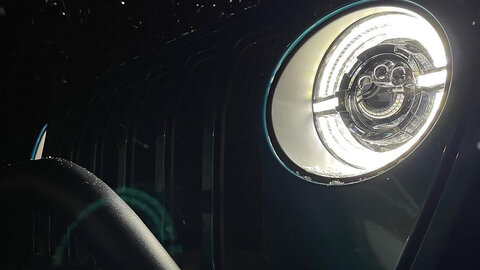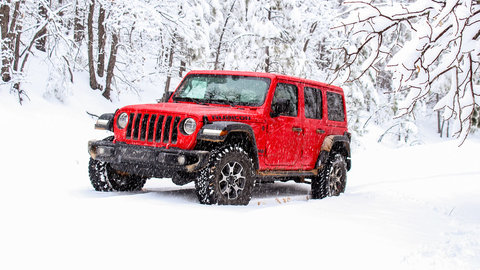by Matt Konkle
Managing Editor
Jeep tires is a fantastically weird category. On the one hand, tires are usually one of the first upgrades (along with wheels) that some owners make after purchasing their vehicle. On the other hand, many people never think about tires until the tread is almost worn out.
It can also be quite a confusing category, especially when trying to understand what tire sizes work on a stock or lifted Jeep, as well as the different tire styles and ratings—which is why many choose to ride out their current tires as long as possible.
But it doesn’t have to be that way. And upgrading your Jeep’s tires means more than just adding new rubber. New tires can be a serious performance upgrade on the trail, a statement on the street, and one of the most all-around impactful upgrades you can make.
After all, those tires are the only things connecting your Jeep to the ground.
So, whether you're running daily commutes, chasing rocky landscapes, or darting through beach sand, the right tire setup makes all the difference.
To help you navigate the maze of tread patterns, load ratings, and sidewall specs, we've rounded up the top questions Jeep owners ask about tires, as well as the answers you need to roll with confidence.
What’s the best tire size for my Jeep Wrangler?
It really depends on your model, lift height, and how you use your Jeep. Stock Wranglers typically come with 28– to 32-inch tires straight from the factory, but many owners upsize to 33-inch or 35-inch for improved ground clearance and a beefier stance.
For older vehicles like YJ and TJ Wranglers, those larger sizes mean adding a lift kit. For JK Wranglers, a 35-inch tire or larger generally requires some form of body or suspension lift. Newer JL Wrangler and JT Gladiator Jeeps can get away with a 35-inch tire upgrade, and even a 37-inch tire, depending on the setup.
Additionally, going bigger than 35 inches often means you’ll need additional upgrades at some point during ownership. Stuff like re-geared front and rear axles, larger brake systems, and steering enhancements—to keep drivability and reliability intact.
One other factor: always check your Jeep’s factory fender clearance before adding larger tires. Some flares can restrict the Jeep’s turning radius, as well as reduce tire articulation when off-road.
What’s the difference between all-terrain (A/T) and mud-terrain (M/T) tires?
Probably one of the most asked tire questions of all time. That’s because nearly all Jeep tires from the factory are considered ‘street tires’ and don’t have the chops when the vehicle leaves pavement.
Jeep has gotten better about that over time, and some Wrangler models these days do come with more aggressive all-terrain tires right from the start.
So here is the general breakdown between tire styles:
All-Terrain Tires: Designed to handle a mix of on-road comfort and off-road traction. They’re quieter, wear longer, and work well for daily drivers that see weekend trail time.
Mud-Terrain Tires: Feature aggressive tread blocks and larger voids for maximum grip in mud, loose dirt, and rocky terrain. They’re louder on pavement and may wear faster but excel in tough off-road conditions.
As far as which way to go: If your Jeep spends most of its time on-road, with perhaps a bit of time on the trail, go A/T. If you live in the mud, crawl rocks, or love challenging trails, M/T gives you that extra bite and additional off-pavement performance.
Do I need to re-gear my Jeep for larger tires?
When you jump from stock to significantly larger tires (e.g., 35” or 37”), your Jeep’s factory gear ratios may struggle to turn them efficiently. This can lead to sluggish acceleration, poor fuel economy and increased transmission strain.
Re-gearing your axles restores proper power delivery, especially on automatic transmissions. If you regularly tow, run oversized tires, or wheel in steep terrain, re-gearing is highly recommended for both performance and long-term drivetrain health.
Look here for commonly accepted gear ratios depending on current tire size.
How often should I rotate my Jeep tires?
Tire rotation helps ensure even tread wear, extending the life of your set. Jeep tires—especially aggressive off-road tread patterns—should be rotated every 5,000–6,000 miles, or at least every other oil change. This is particularly important on 4x4 vehicles where all four corners see varying loads during off-road use.
Don’t forget the spare: On a five-tire rotation pattern, include your full-size spare to keep wear even across all tires.
We’ve created this guide for a proper Jeep tire rotation strategy.
How long do Jeep tires typically last?
On average, Jeep tires last 40,000 to 60,000 miles, but this depends heavily on tire type, driving style and terrain. Mud-terrain tires often wear faster due to softer compounds, while all-terrain or highway tires can last longer on pavement.
Regular rotations, proper inflation and avoiding excessive wheel spin on trails all help extend tire life.
Are used tires a good option for Jeeps?
Used tires can save money, but they come with risks: unseen damage, uneven wear, or older rubber prone to failure. Always check tread depth, age (DOT code), and condition before buying, and avoid mixing partially worn tires with new ones.
Can I mix different tire brands or tread patterns on my Jeep?
Technically, yes. Practically, it’s not recommended. Mixed tires can cause uneven traction, inconsistent handling, and unpredictable braking—especially in 4WD.
Matching tires on all four wheels ensures uniform grip, balanced wear and safe performance. If you need to replace a single tire, we highly recommend matching brand, model and size.
How important are load ratings and sidewall ply counts?
Jeep tires are tasked with carrying heavy rigs, gear, passengers and sometimes towing loads. A higher load rating (C, D, or E) indicates a stronger tire capable of handling more weight. More sidewall plies add strength and puncture resistance—a huge plus on rocky trails.
For most Wranglers and Gladiators, a Load Range C or D is ideal for balancing ride comfort and durability. Overlanding rigs or those hauling heavy armor may benefit from Load Range E for extra toughness.
What tire pressure should I run on and off-road?
On-road: Follow the door-jamb sticker (typically 30–35 PSI) for safe, even wear.
Off-road: Airing down to 12–18 PSI improves traction, softens the ride, and increases the tire’s contact patch on sand, rocks, or mud. Of course, this can depend on what type of wheel you utilize. Features like beadlocks enable Jeep owners to safely air down to around 5 PSI. Always carry a reliable gauge and an onboard or portable air compressor to reinflate before hitting pavement again.
How do I know when it’s time to replace my Jeep tires?
Replace tires when tread depth falls below 2/32”, or sooner if you notice uneven wear, cracks, bulges, or persistent vibration while driving. Regular inspections help catch issues before they become unsafe. Additionally, most aggressive tires have wear bars that you can use to determine when they need to be replaced.
Can I run different tire pressures front and rear?
Some Jeep owners adjust pressures for specific loads or towing, but for everyday driving, keep tire pressures consistent and within manufacturer guidelines. Off-road, you should air down all four tires evenly for balanced traction.
Are bigger tires bad for gas mileage?
Yes, upsizing tires can reduce fuel economy because of increased weight, rolling resistance, and altered aerodynamics. Larger tires can also affect your speedometer and gearing.
Re-gearing, proper inflation, and lightweight alloy wheel choices can help offset mileage loss.
Do tires affect Jeep ride comfort and noise?
Possibly. Most all-terrain tires are fine for comfort and noise, but mud-terrain versions often generate more road noise and vibration. Sidewall stiffness, tread pattern, and tire pressure can also play a role in ride quality.
Choosing the right tire is about balancing comfort, traction and durability for your specific driving style.
What’s the difference between P-metric and LT tires?
P-metric (Passenger): Designed for lighter loads and smoother rides, often stock on base Jeep models.
LT (Light Truck): Built with stronger sidewalls and higher load ratings for heavy-duty or off-road use.
Most off-roaders prefer LT tires for durability, especially when adding heavier items like winches or bumpers, or towing heavy loads.
Should I use tire chains on my Jeep?
Tire chains can greatly improve traction on ice or packed snow, but are generally not needed for a Jeep with most aftermarket tires. Chains should only be used when legally required or in extreme conditions.
Always follow manufacturer guidelines to avoid damaging fenders or suspension components.

